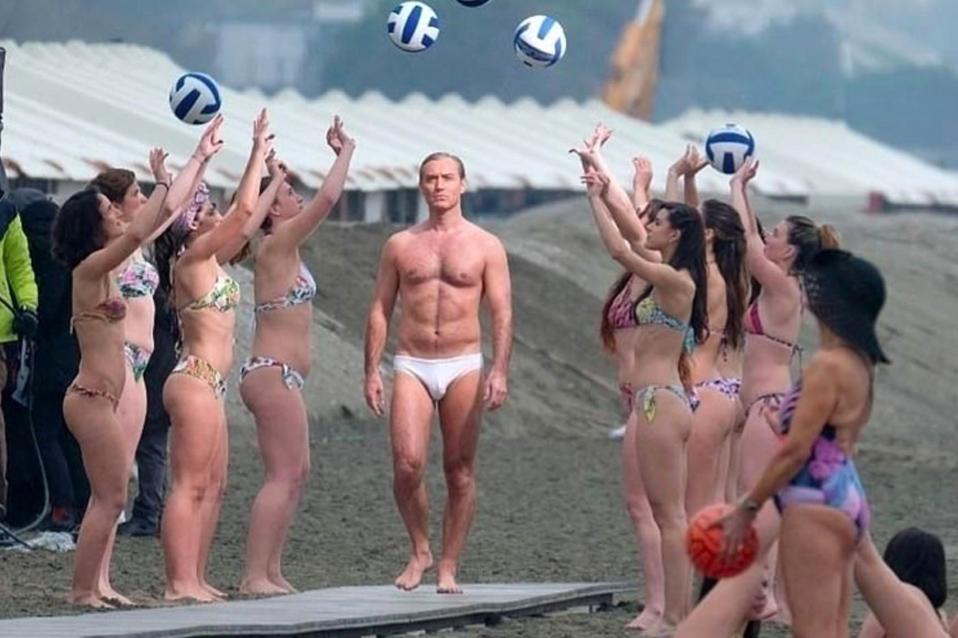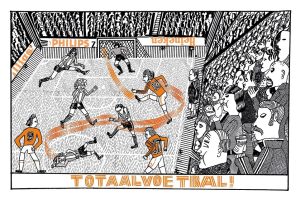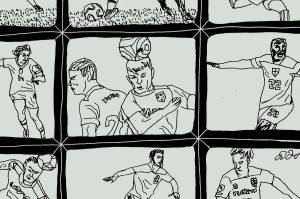The vision of Jude Law filming The New Pope at the beach has been acclaimed as a miracle — the washboard abs, the white trunks sticking closer than the Swiss Guard. As followers of the heretical TV series will know, the first series of The Young Pope featured another sporting vision, nuns playing soccer in slow motion. The soccer theme, if not the sporting nuns and the sex scene, is believed to derive from the real Pope Francis’s enthusiasm for the ‘beautiful game’.
Any soccer fan wishing to understand the nature of faith will understand what Francis, a juvenile goalkeeper and fan of Argentinian league side San Lorenzo, sacrificed when, in 1990, he forswore watching soccer on television. Since then, he has used football as a spiritual metaphor and social icebreaker, and has even been spotted playing table soccer in a visit to Rome’s SOS Children’s Village. But he continues to deny himself Saturday afternoons and weekday evenings in front of the flat screen.
The pontiff is not the only fan of soccer, or calcio, as his new Italian neighbors call it. On Tuesday evening, the Twitter traffic in images of Jude Law in his budgie smugglers was eclipsed by the curious acronym #COYS — ‘Come on you Spurs!’ — as London club Tottenham Hotspur met Manchester City in the first part of a two-legged Champions League match. When it comes to sport, soccer is the world’s game, and the US is playing catch-up. Or rather, American men are still catching up. American women are already the current world champions.
Since the founding of the Women’s World Cup in 1991, the American women’s team has won three of the seven tournaments. In June, the US team defend their 2015 title in France. Their victory in the final over Japan four years ago was watched by 26.7m Americans — just short of the 29.2m who watched Pope Francis’s Argentina lose at home in Rio to Germany in the 2014 men’s final.
That defeat caused some Argentinian fans to detect a ‘Curse of the Madonna’ — divine retribution in the style of the ‘Curse of the Bambino’ that prevented the Boston Red Sox from winning the World Series between 1918 to 2004, or the ‘Curse of the Goat’ that afflicted the Chicago Cubs after 1945. Argentina’s ‘Curse of the Madonna’ should not be confused with the ‘Curse of the Maradona’, in which Argentina’s diminutive cokehead Diego Maradona sent England out of the 1986 World Cup by illegally palming the ball into the net.
The British are said to have acquired an empire in a fit of absentmindedness. The United States is moving towards sport’s ultimate global prize, dominance in men’s soccer, in similar fashion. Soccer is now the fourth most popular sport in the US, with more than 25m players. The ground was laid by college leagues, and especially Title IX, but hosting the 1994 men’s World Cup was the watershed for American soccer. In 1991, there were 318 women’s teams; by 1999, there were 959. In 2002, the US men reached the quarter-finals of the World Cup. After a significant dip in form which saw them miss out on the tournament in Russia last year, a youthful US men’s national team are resurgent, thanks largely to players such as new Chelsea purchase Christian Pulisic, and Timothy Weah, son of the Liberian president George.
It’s only a matter of time before the US men win the World Cup. Just under a third of American households contain a juvenile soccer player, busily practicing away, unaware that while the ascendance of US soccer might compensate for geopolitical and economic troubles, the eclipse of baseball and basketball, and the integration of the US into the world soccer market, might mean another blow to American exceptionalism. Still, the dream is within reach — literally. The US has an inexhaustible pool of talent on its southern doorstep: in Central and South America, football is religion. It might be in the national interest for President Trump to create a hole, round in shape and about 8.65 inches in diameter, in the southern border wall.


















